There are books and films about grief but in the end, it was up to me
Amid the bewilderment of loss, art helps us navigate a way forward.
By Nova Weetman
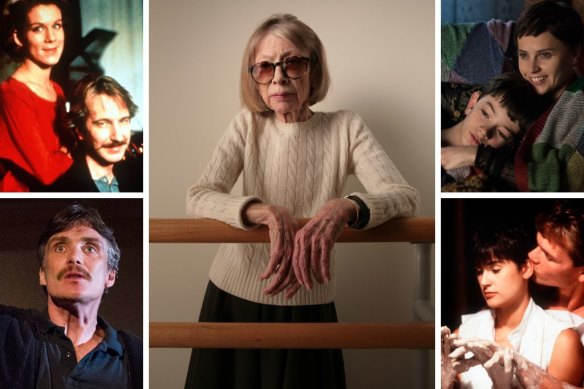
Clockwise from main: Joan Didion; A Monster Calls; Ghost; Cillian Murphy in a stage adaptation of Grief is the Thing with Feathers; Truly, Madly, Deeply.
In the months following my partner’s death in September 2020, I hunted for advice on how to behave, how to grieve and how to frame my new identity. It was during the pandemic, and my contact with the outside world was limited. I couldn’t surround myself with my people, but our shelves were full of books, and so in between binge-watching old episodes of Gilmore Girls with my kids, I started reading.
I skipped over anything light, choosing the darkest books that I could find. The only requirement was that they had to be about death, and the death had to be final, which ruled out fantasy, science fiction and vampires. If somebody had suggested that I would one day seek out bleak fiction and memoir as company for my grief, I would have laughed, imagining that when the time came, I would want distraction. But these titles became my allies. Sometimes, they spoke to me and helped me process all that I was feeling, and other times, they frustrated me because they fell so short.
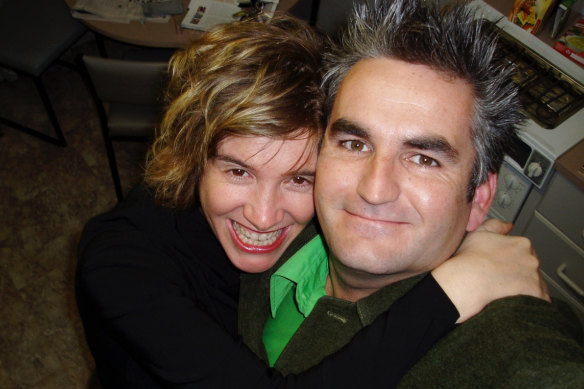
Nova Weetman and Aidan Fennessy. In the months following his death, she looked to books and films for a sense of how to grieve. Credit: Nova Weetman
I had read Joan Didion’s memoir, The Year of Magical Thinking, when my mum died 10 years earlier, but I dived hungrily back into my dog-eared copy, reading and rereading sections that most spoke to me. Didion’s husband died unexpectedly, nothing like my partner’s death from cancer, but some of her experiences of grief were similar.
She wrote about the distinctive look a person has after they have recently lost someone, as if they have removed their glasses and stepped outside into the daylight. I knew I had this glazed, stunned expression, as if the world had changed while I was inside saying goodbye.
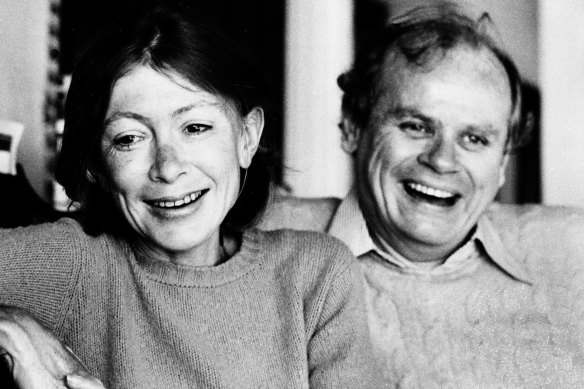
Joan Didion and her husband, John Dunne, in 1977.Credit: AP
She wrote of the difficulty in cleaning out her husband’s clothes, choosing to keep his shoes in case he returned and needed them. I, too, kept things. A jumper so oversized it draped around my knees had been bought when Aidan travelled as a young man, and worn over the years whenever one of us was sick.
But where Didion spoke about magical thinking, the sort of precipice of believing that her husband would one day return, I had no such belief. I had watched Aidan die in the hospital bed I’d hired, and waited while the men from the funeral home carried his body out onto the street. No amount of magical thinking would return him home, so I returned Didion to the bookshelves and went looking for something else.
A friend living in Ireland had sent me a parcel of books while Aidan was sick. Books I didn’t read until after he was cremated because I was too busy staring at the wall. One of these was Max Porter’s Grief is the Thing with Feathers.
A slip of a book, it is the story of a father of two boys who is dealing with the death of his wife while writing his own book about Ted Hughes. One day, a black crow arrives as a sort of caretaker and grief counsellor for the family, threatening to stay until they no longer need him.
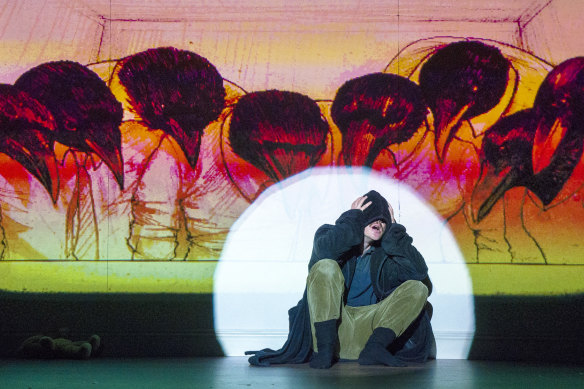
Cillian Murphy in a 2019 stage adaptation of Grief is the Thing with Feathers.Credit: New York Times
I remember reading this late at night in the chair that Aidan bought me to breastfeed our first child. I would read sentences over and over, absorbing the father’s despair as he contemplated the sadness of his children, while fearing the same for my own. I wasn’t just grieving for myself, I was also grieving for them, for the father they wouldn’t have, so I wanted reassuring stories of how that would play out.
Sometimes, it was too much to read a whole book, so I would turn to the quick release of a film to help me cry, avoiding any that featured the dead returning, such as Truly, Madly, Deeply or Ghost, because I knew I’d be envious. Instead, I sought out A Monster Calls, based on the novel by Patrick Ness about a boy who calls upon a giant anthropomorphic tree to help him deal with his mother’s declining health and eventual death.
Aidan had taken our daughter to see the film a year or so before he was diagnosed and when they came home, they were still red-eyed and warned me not to watch it. After he died, I wanted to see the stories that moved him, and the film cracked open the anger of my grief in a way that books hadn’t. I was desperate to roar and scream and smash things, too, just like 12-year-old Connor did in the film. I was tired of being polite and of trying to frame what I was feeling so I wouldn’t upset my audience.
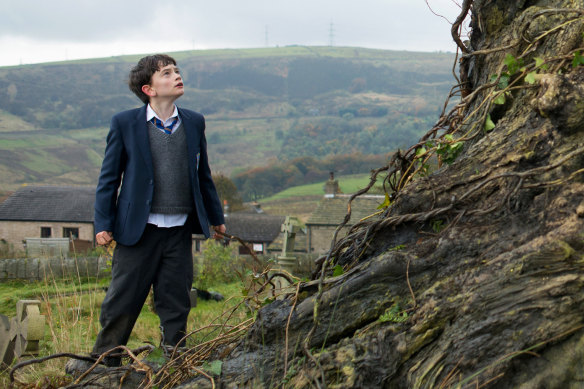
Lewis MacDougall in A Monster Calls.Credit: AP
But I couldn’t smash things. I had two children to look after. I had to find my own way through. And the more I watched and read and talked, the more frustrated I became at how death and grief is so often represented in popular culture as an obstacle, a growth opportunity, or an inciting incident on a narrative arc. I wanted more. I wanted truth and mess and ugliness and validation for all the complex feelings I had.
The film cracked open the anger of my grief in a way that books hadn’t.
I realised that the books and films I’d been drawn to used art forms to unpack the characters’ despair. Didion’s work as a writer informed how she moved through grief, Porter’s father is a dishevelled novelist writing about Hughes who wrote a poem called Crow and Mama, and in A Monster Calls, Connor draws his pain. These characters had successfully used art to face the enormity of everything they felt, and I began to wonder if I could do the same.
I started to write my experiences in a journal as a way of processing. But the more I wrote, the more form it began to take, and I slowly realised that I was writing my own grief memoir. Over the three years it took me to finish, I grieved, I mourned, and I changed. I stopped wanting to smash things and started wanting to enjoy them. I found a way to think about Aidan without anger, hurt or even sadness. And just as Didion had written about her husband towards the end of her book, Aidan had become the photograph on the table. I just had to work it out for myself. And to do that took time.
Nova Weetman’s memoir, Love, Death & Other Scenes, will be published by UQP on April 3.
Nova Wheetman is a guest of the Sydney Writers’ Festival (May 25 – 26) & Brisbane Writers Festival (May 30 – June 1)